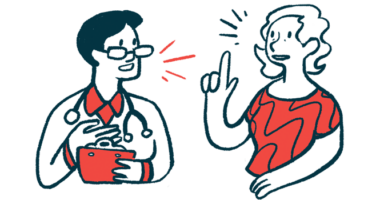Global Data Show Longer Delay in HAE Treatment for Patients in Spain

Spanish patients with hereditary angioedema reported fewer severe attacks and longer delays for treatment with Firazyr (icatibant injection) compared with patients from other countries, a retrospective analysis shows.
Patients in Spain also reported longer‐lasting attacks. Overall, these findings from the Icatibant Outcome Survey highlight differences in disease management and treatment administration, and call attention to the benefits of early on‐demand treatment.
The study, “Hereditary angioedema due to C1 inhibitor deficiency: real-world experience from the Icatibant Outcome Survey in Spain,” was published in the journal Allergy, Asthma & Clinical Immunology.
Hereditary angioedema (HAE) is a rare genetic disorder that can be caused by genetic mutations in the SERPING1 gene. These mutations result in the defective production of a protein, called C1-inhibitor, that, among other functions, helps control blood clotting and inflammation.
The disease is characterized by sudden and recurrent episodes of swelling in the face, tongue, hands, feet, gastrointestinal tract, genitalia, and upper airways.
The Icatibant Outcome Survey (IOS; NCT01034969) is an ongoing international, observational registry study monitoring the outcomes of HAE patients being treated with Firazyr and/or Cinryze.
The study has recruited patients across 13 countries, including Spain, Australia, Austria, Brazil, Czech Republic, Denmark, France, Germany, Greece, Israel, Italy, Sweden, and the U.K.
In the new analysis, researchers in Spain along with colleagues at Takeda Pharmaceuticals, which commercializes Firazyr and Cinryze, compared the characteristics and outcomes of Spanish HAE patients treated with Firazyr to those from other centers. The analysis included retrospective data collected for approximately 10 years (July 2009 to January 2019).
In total, the researchers included data from 1,026 patients, of which 119 were Spanish (median age at enrollment was 39.3 years; 53.8% were women) and the remaining 907 were from other countries (median age at enrollment was 39.0 years; 60.4% were women).
At the time of the analysis, Spanish patients were followed for a median of 5.6 years and those from other countries for 2.4 years.
No significant differences were seen between Spanish and patients from other countries in median age at symptom onset (15.0 vs. 12.0 years) or age of diagnosis (22.3 vs. 20.5 years).
Improvements in diagnosis in Spain were seen since the year 1970 and since 1975 in other countries.
During follow-up, the incidence rate of attacks was 2.66 in Spain and 1.46 across other countries. A total of 1,662 treated attacks were reported by 101 Spanish patients, and 5,645 attacks by 464 patients from other countries. The median number of attacks was 10 per treated patient in Spain during follow-up, and it was five per patient in other countries.
Over half of the patients (72% in Spain and 53.5% in other countries) experienced one or more untreated attacks during follow-up. The median number of attacks per untreated Spanish patient was five and it was one per untreated patient in other countries.
The vast majority of these attacks affected a single body part in both patient groups: 88.2% in Spanish and 89.1% in patients from other countries. The proportion of patients experiencing attacks in the abdomen (54.4% vs. 58.0%), skin (47.8% vs. 43.5%), larynx (3.9% vs. 5.0%), and other locations (6.0% vs. 4.8%) were similar in both groups.
Patients in Spain reported significantly fewer severe or very severe HAE attacks compared with patients from other countries (41.0% vs. 45.9%).
Triggers for attacks were similar between both groups of patients and included emotional distress, changes in the estrogen levels (for women), physical trauma, and infection.
The most frequent prodromal, or early, stage symptoms in both groups included tiredness, a type of skin rash that spreads on the trunk and limbs, called erythema marginatum, tightness/prickling sensation in the skin, and nausea.
Firazyr was the treatment of choice for HAE attacks in 76.7% of patients from Spain and 85.5% of patients from other countries.
However, patients in Spain waited for longer periods to receive Firazyr compared with patients from other countries (median of 2.9 hours vs. 1 hour). The time to attack resolution also was longer for patients in Spain (median of 18.0 vs. 5.5 hours).
Overall, total attack duration was longer in patients from Spain (median 24.6 vs. 8.0 hours), with a higher proportion of attacks lasting over four hours (93.8% vs. 73.0%).
When assessing Firazyr’s route of administration, the researchers found that self-administration was the more common choice, being used for 93.7% of attacks in Spanish patients and 95.7% of attacks in those from other countries.
For patients in Spain, the proportion of attacks treated with self-administered Firazyr increased from 82.0% for the first attack to 92.2% for the third attack. However, self-administration in Spain was delayed compared to other countries in the first three years of the IOS study.
Attenuated androgens were the most frequently used form of long-term preventive treatment in Spain and other countries, followed by plasma-derived C1 inhibitor, and tranexamic acid.
The rate of severe or very severe attacks was comparable between patients with and without long-term preventive treatments (40.4% vs. 42.3%).
Firazyr-related adverse events were reported in 2.1% of Spanish patients and 4.4% of patients from other countries. Among patients in Spain, the most frequently reported Firazyr-related adverse events included weakness, hypersensitivity, and administration site reaction.
Overall, these results show that Spanish HAE patients “reported fewer severe/very severe attacks, administered icatibant later, and had longer‐lasting attacks than did patients across other countries in IOS,” the researchers wrote.
“These differences may indicate varying disease management practices (e.g., delayed icatibant treatment) and reporting. Efforts to raise awareness on the benefits of early on‐demand treatment may be warranted,” they wrote.








